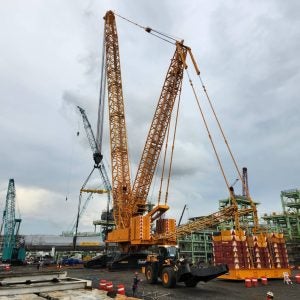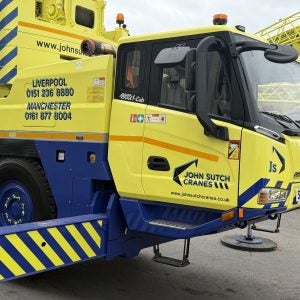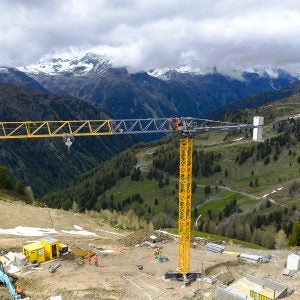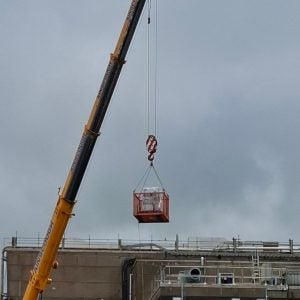The UK’s Construction Plant-hire Association (CPA) has published safety guidance on transport platforms.
The CPA said that this guidance, together with design modifications, had ‘assured the future’ of this equipment which many condemned as unsafe when they first appeared in the UK from mainland Europe in the early1990s.
‘The CPA Best Practice Guide Installation, Use, Maintenance, Inspection, Examination and Testing of Transport Platforms’ was launched on 26 September at a meeting of the Construction Hoist Interest Group (CHIG), a special interest group within the CPA.
The guide has been fully endorsed by the Health & Safety Executive’s chief inspector of construction Kevin Myers and been sent to all HSE inspectors in the field. The purpose of the guide is to provide best practice for those responsible for the planning, safe installation, use, maintenance, inspection, thorough examination and testing of transport platforms.
Transport platforms are similar to goods/passenger hoists. However, transport platforms are slow moving and are similar in many ways to mast climbing platforms in that they are used as a moving work platform. Some of these machines are versatile ‘dual function’ machines that can be switched between ‘transport platform mode’ and ‘hoist mode’.
By 1999 transport platforms were relatively popular in the UK and numbers began to rise rapidly. The CPA became alarmed because they were considered to be less safe than construction hoists that had been subject to prescriptive standards of safety for many years. The HSE and the CHIG met in November 1999 to discuss the problems. The HSE made a statement at that time to the effect that it believed transport platforms contravened the requirements of Regulations 5(1) and 6(1) of LOLER. After considering various options for a way forward, the CHIG Transport Platform Working Group was established to write guidance on the safe use of transport platforms as quickly as possible. The Working Group was made up of representatives of three manufacturers and five plant hire companies. The guidance was submitted to the HSE for their comments.
The HSE’s main concerns at that time centred on the design of these machines. The Principle Specialist Inspector in charge of the Lifting Equipment Section, Iain Paterson, was charged with conducting investigations in depth, working with the manufacturers and hirers. For a period of time the future of these machines in the UK lay in the balance. On the completion of their investigations, the HSE asked the manufacturers to carry out certain modifications to their machines within an agreed six month period.
These modifications were applicable to all transport platforms used to carry passengers and the main requirements were that they must be fitted with: – falling object protection, ie. a roof – a full height base enclosure with gates which are electrically interlocked – carrier gates that cannot open outwards inadvertently – landing gates that comply with the provisions of the standard BS EN 12159.
The Transport Platform Best Practice Guide covers all aspects including: 1. pre-installation 2. erection and dismantling 3. periodic checks – daily (pre-use), weekly and monthly checks 4. periodic thorough examination 5. testing – at installation, periodic tests and tests after major repairs or modifications 6. records of inspection, maintenance and thorough examination 7. operation – covering the operator, risks, dual function, loading of the platform and environmental conditions 8. selection and training of the operator and machine familiarisation 9. maintenance – including personnel and frequency.
The best practice guide does not apply to builders hoists used only for materials, typically operated by remote control from the ground or landings; builders hoists for persons and materials; mast climbing work platforms; or mobile elevating work platforms.
Copies of the CPA Best Practice Guide are available from the Construction Plant-hire Association, 52 Rochester Row, London, SW1P 1JU, telephone: +44 (0) 20 7630 6767; price £7.50.






